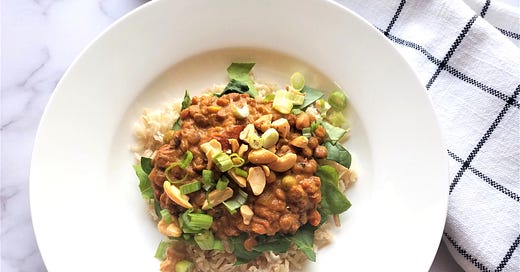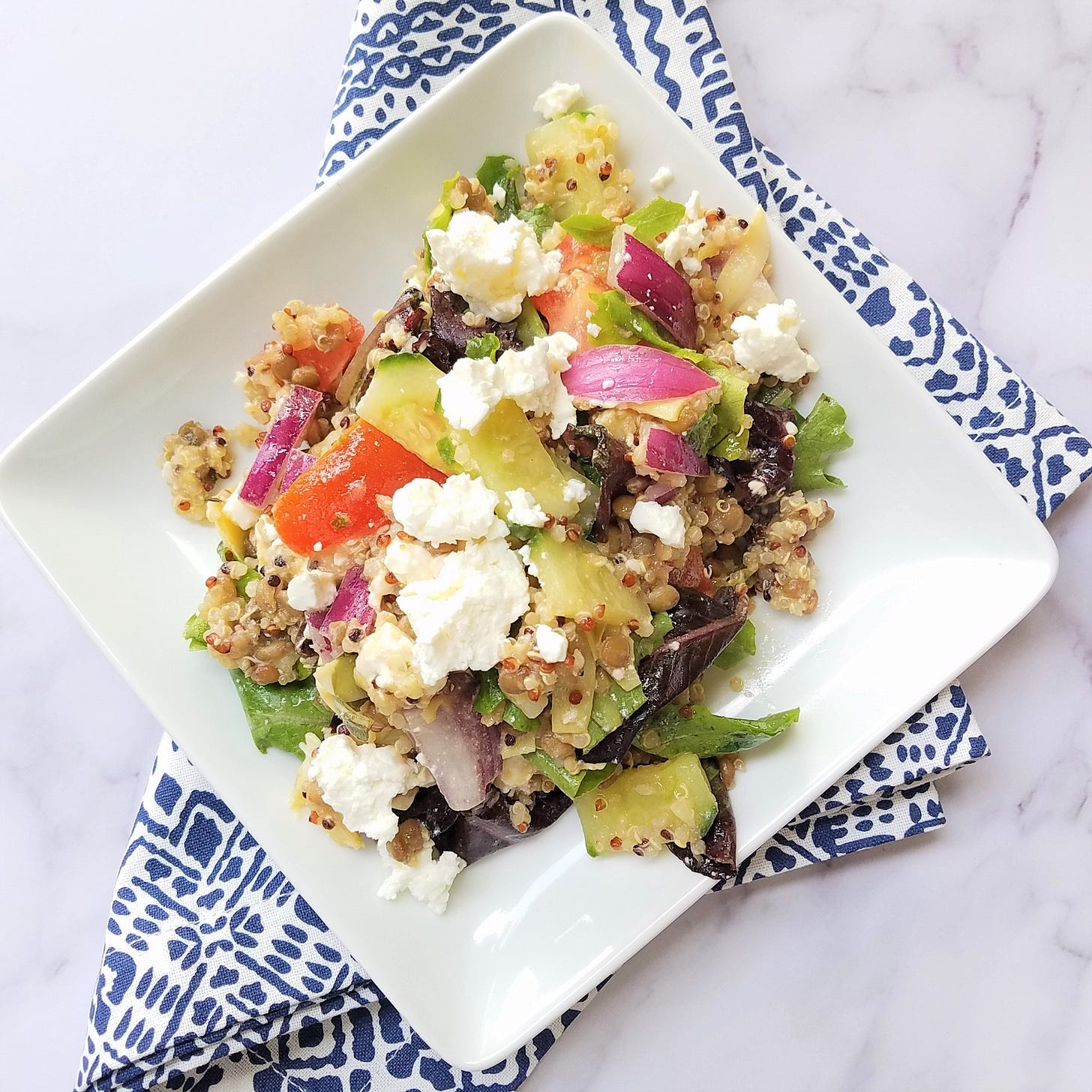5 Tips for Cooking Lentils
Simple steps that make preparing this budget-friendly, nutrition-rich pantry staple even better!
Lentils are a budget-friendly readily-available, easy-to-prepare pantry item. For their size, they truly pack a nutritious punch providing a fair amount of protein, fiber, and essential vitamins and minerals that can help fight chronic diseases, and support gut and brain health.
Lentils are commonly referred to as a legume and are also called a pulse. Oftentimes, the terms are used interchangeably, but to clarify, the term legume refers to a plant – one that produces fruit grown in pods. Pulse refers to the edible seeds of a legume plant, such as lentils, chickpeas, beans, peas, and peanuts. Their origin can be traced to Asia and North Africa, yet today, Canada is the world’s leading producer and exporter of lentils followed by India and Australia.
Lentils are traditionally used in many types of cuisine. What makes them a great weeknight meal option is that they do not require presoaking like dried beans and cook rather quickly. Here are five tips that will help make cooking lentils even better.
1. Select the right lentil for the dish.
Lentils can be separated into four main types - green, brown, red or yellow, and specialty. Green, brown, and specialty generally are left whole, while red and yellow are usually split. Many sub-varieties are available at specialty food markets, with whole brown and split red lentils being commonly found in grocery stores.
When selecting lentils, consider how they will be used.
Whole lentils generally hold their shape and texture making them ideal for use in salads, entrees, and side dishes.
Split lentils are smaller and have the outer seed coat removed. They cook quickly and tend to lose much of their shape, making them ideal thickeners for soups and stews or served as a puree.
Lentils are often purchased dried, although canned are available in some markets and work well in many recipes.
2. Do a quick sort and rinse before cooking.
Just as with dried beans, it’s important to sift through dried lentils before cooking in the unlikely event there is a stone or other debris. Then place the lentils into a mesh strainer and rinse thoroughly to remove any dust. If using canned lentils, rinse thoroughly to reduce the sodium content from the canning process.
3. Infuse with aromatics and seasonings.
Lentils absorb flavors well from seasonings. To infuse flavor into lentils while simmering, add aromatics such as fresh or dried herbs, spices, a bay leaf, diced or sliced onion, and whole or crushed garlic cloves.
4. But…hold off on adding salt and acid.
Adding salt or any type of acid (lemon juice, vinegar, wine…) to the cooking liquid can cause the lentils to stay crunchy or become tough. Hold off on adding salt or an acid until the lentils are fully cooked and tender. Then, add these ingredients while the lentils are still hot or warm to help them absorb the flavors.
Canned lentils may not require additional salt or acid. Taste before adding, and consider other seasonings in the final dish.
5. Simmer gently.
Both whole or split (dried) lentils need time to slowly absorb the cooking liquid to soften. When cooking whole lentils, the goal is to have them retain their shape and not become mushy. Split lentils will naturally break down yet still need time to absorb the cooking liquid to become tender, rather than grainy. A very gentle simmer is the best approach for both types.
General Stove-top Cooking Instructions:
In most situations, 1 cup dried lentils will produce about 2 1/2 cups of cooked lentils.
1. Place 3 cups liquid (water, broth, or stock) into a large saucepan with a cover. Add 1 cup of dry lentils that have been sorted, thoroughly rinsed, and drained.
2. To infuse flavor into lentils while simmering, select fresh or dried herbs, a bay leaf, diced or sliced onion, and whole or crushed garlic cloves. This is optional and dependent on how the lentils will be used.
NOTE: Do not add salt or acid to the cooking water, as it can affect absorption and make the lentils tough.
3. Bring to a low boil, cover tightly, reduce the heat and simmer gently over low heat until they are tender. Consult specific recipes for precise cooking times. Drain any remaining liquid.
4. Season lentils with a small amount of salt and splash of acid after cooking is complete. Toss gently to distribute. Taste and adjust seasonings as needed.
Canned lentils may be used at room temperature, chilled in salads or heated in soups, stews, casseroles and other dishes.
BONUS
As a quick reference for choosing and cooking lentils, I’ve created this handy guide:
Lentils – A Cooking Guide for Common Varieties (Love + Craft Kitchen)
For more in-depth information on lentils, check out these resources.
Lentil Hunter Video Series with Chef Michael Smith
RECIPES
© 2024 Love + Craft Kitchen, LLC, All Rights Reserved








